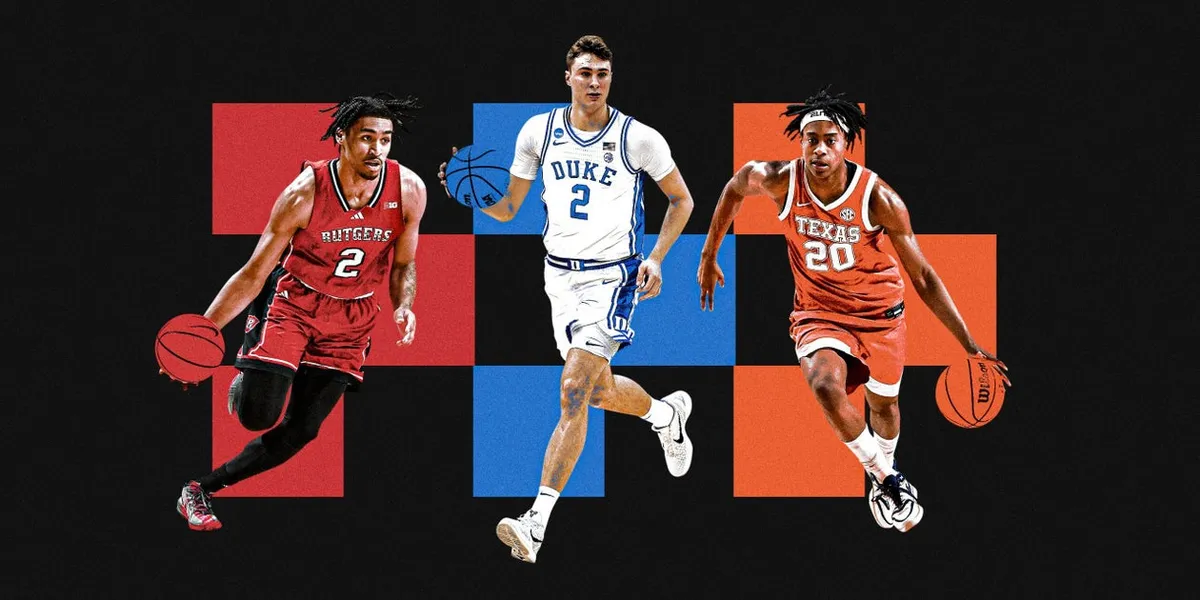
The excitement is building as the 2025 NBA Draft early entry list has been released, prompting a much-anticipated update to The Athletic’s mock draft. This year's early entry list is notably smaller than previous years, with only 106 early entrants declaring for the NBA Draft. This figure is significantly lower compared to the 195 players who entered last year and the 242 players from the year before. The peak was in 2021 when a staggering 353 players declared for the draft, highlighting the evolving landscape of college basketball, particularly due to the rise of the name, image, and likeness (NIL) marketplace.
This reduction in early entrants is expected to change dramatically by May 28, the deadline for players with remaining collegiate eligibility to withdraw from the draft. Many athletes on the early entry list are projected to return to school, especially those who stand to earn substantial NIL dollars. The dilemma facing these players is clear: should they choose guaranteed money from a college or risk entering the draft where they might only secure a two-way contract worth approximately $600,000? Most players and their agents are likely to opt for the guaranteed income.
An intriguing situation has emerged where agents and players are considering whether the potential for many players to withdraw from the draft might create an opportunity for those who remain. This uncertainty has significantly impacted the depth of the class, raising concerns for NBA teams, particularly those with selections in the 40s, about the potential value of their picks.
Teams in the late 20s and 30s are questioning the viability of their selections, as this draft class was not initially viewed as particularly strong. Evaluators are expressing skepticism about the average value starting from around the No. 3 pick onward. There are specific ranges within the draft where talent is perceived to plateau, with some scouts favoring the middle of the lottery while others see late teens as a sweet spot for potential value. Currently, only the top two picks are generating excitement among teams.
The upcoming draft lottery on May 12 will be crucial for teams like the Utah Jazz, who could significantly reshape their future by securing a player like Cooper Flagg, widely regarded as a franchise-changing talent. Conversely, if they fall out of the top two, they may settle for a player with potential but significant questions, such as Tre Johnson at No. 5.
Here’s a quick overview of the projected draft order based on a recent lottery simulation:
Washington Wizards - Cooper Flagg | 6-9 forward | 18 years old | DukeUtah Jazz - Dylan Harper | 6-6 guard | 19 years old | RutgersPortland Trail Blazers - Tre Johnson | 6-6 wing | 19 years old | TexasNew Orleans Pelicans - V.J. Edgecombe | 6-3 guard | 19 years old | BaylorCharlotte Hornets - Ace Bailey | 6-10 wing/forward | 18 years old | RutgersPhiladelphia 76ers - Kon Knueppel | 6-7 guard | 19 years old | DukeBrooklyn Nets - Kasparas Jakučionis | 6-5 guard | 19 years old | IllinoisToronto Raptors - Derik Queen | 6-10 big | 20 years old | MarylandSan Antonio Spurs - Carter Bryant | 6-8 wing | 19 years old | ArizonaHouston Rockets - Collin Murray-Boyles | 6-8 wing/forward | 20 years old | South CarolinaThis mock draft reflects team needs and player ages as of draft day (June 25). Now, let’s dive into some of the top prospects expected to make a significant impact in the NBA.
Cooper Flagg, a standout at Duke, is poised to be the No. 1 pick regardless of which team secures the top selection. Flagg was named the national player of the year at just 18 years old, demonstrating exceptional skill with averages of 19.2 points, 7.5 rebounds, and 4.2 assists per game. His performance peaked during the season's final stretch, where he maintained an impressive shooting percentage. Flagg’s competitive nature and work ethic make him a can’t-miss prospect likely to become the cornerstone of any franchise that drafts him.
Dylan Harper is expected to go second overall, thanks to a remarkable freshman year at Rutgers where he averaged 19.4 points and 4.6 rebounds per game. His ability to create rim pressure and finish at the basket sets him apart, although his pull-up shooting will need improvement. As a lead guard, his physical frame and positive reviews make him an ideal pick for the Jazz, who are looking to solidify their backcourt for the future.
Tre Johnson has emerged as a top prospect following impressive workouts, demonstrating exceptional shooting ability and offensive skills despite playing in a challenging system at Texas. Averaging 19.9 points per game, he could provide the Blazers with much-needed floor spacing and scoring power in the backcourt.
V.J. Edgecombe is a dynamic guard who had a standout freshman season at Baylor, averaging 15 points and showcasing elite athleticism. With the Pelicans looking to reshape their roster, Edgecombe’s potential as a long-term backcourt solution makes him a valuable asset.
Ace Bailey remains a polarizing figure, but his impressive stats at Rutgers—averaging 17.6 points and 7 rebounds—demonstrate his potential. Despite questions about his play style, Bailey’s size and shooting ability keep him firmly in the top five.
As the 2025 NBA Draft approaches, teams will need to navigate the complexities of player decisions and the evolving landscape of college basketball. The early entry list may have shrunk, but the excitement and potential for future stars remain high.